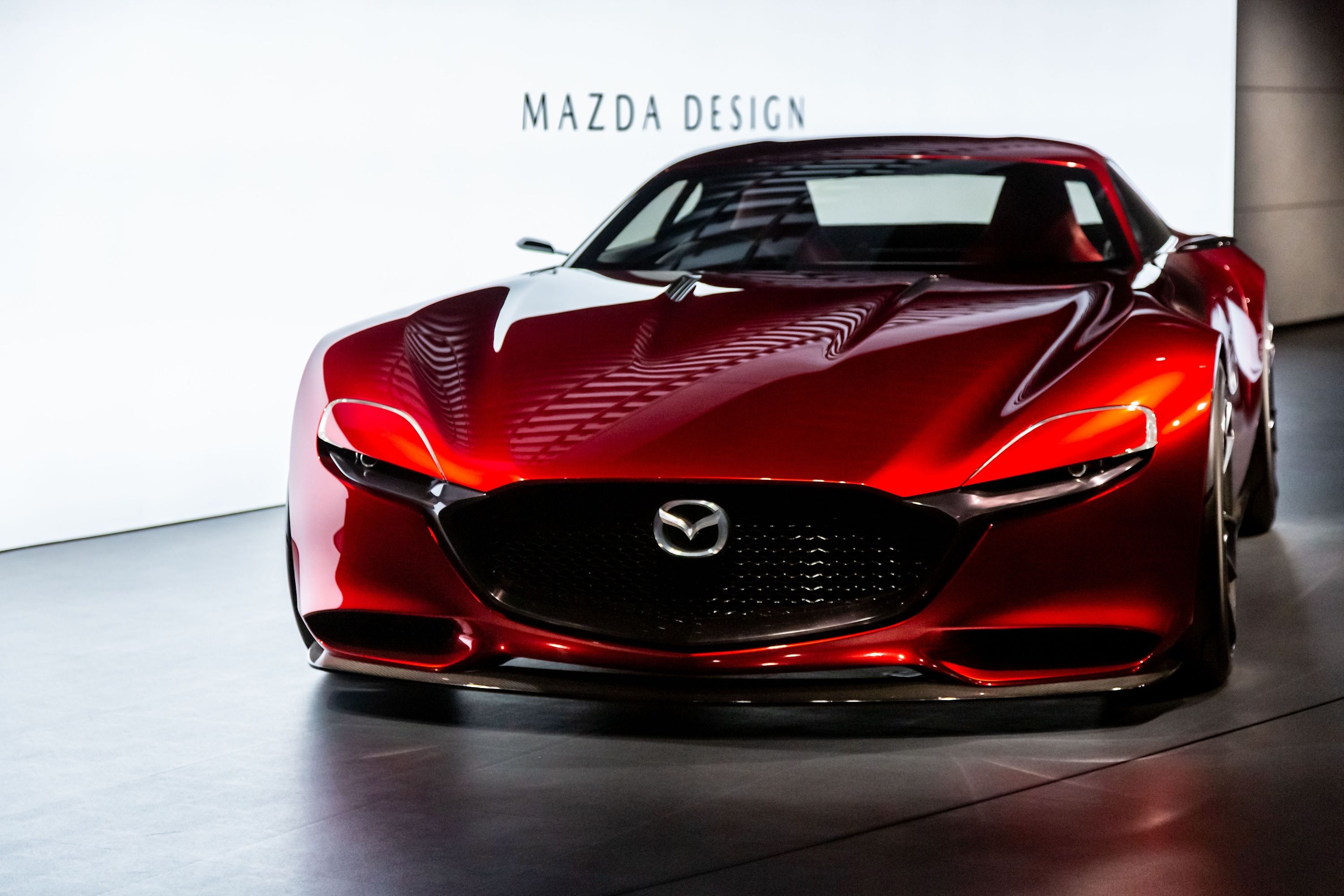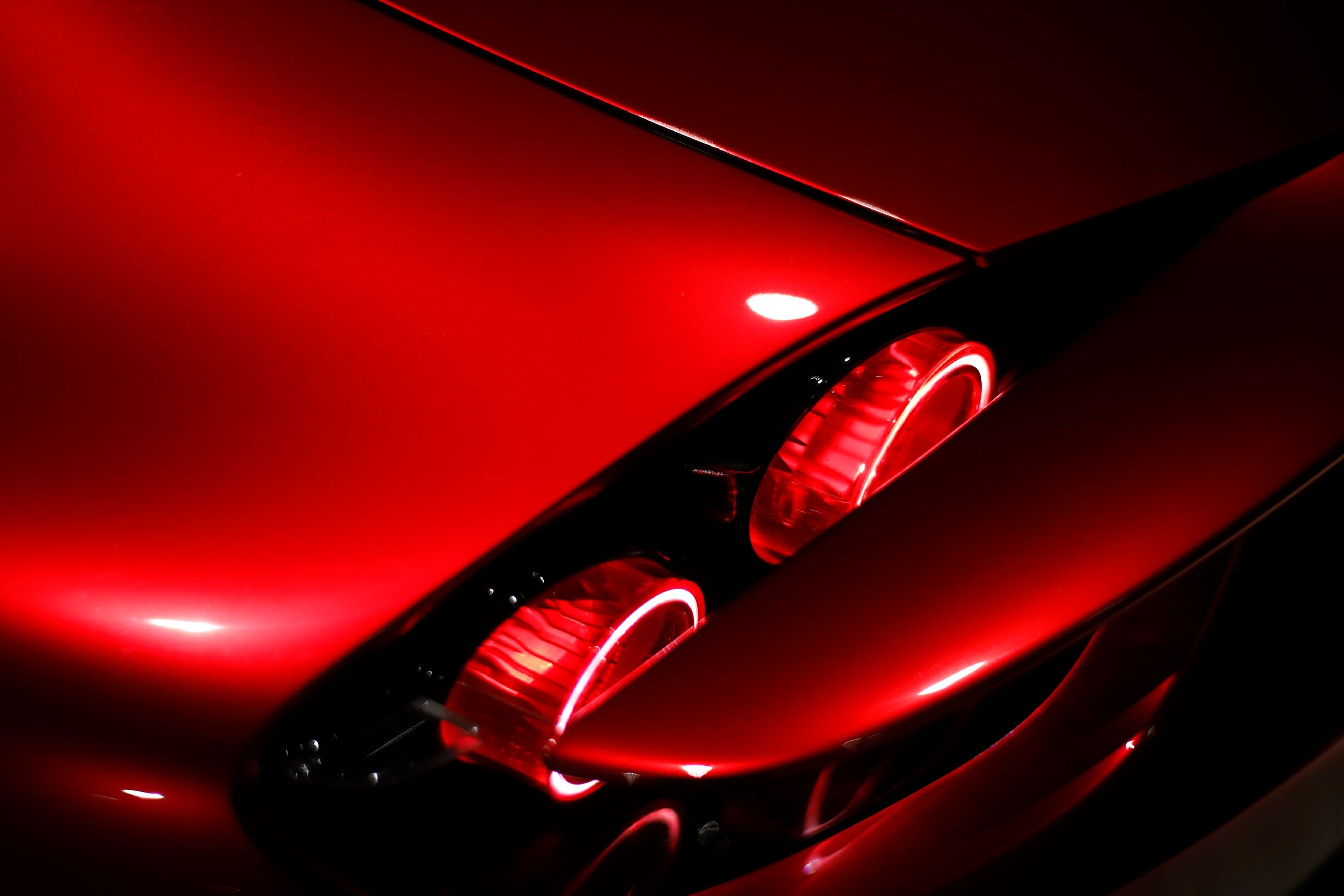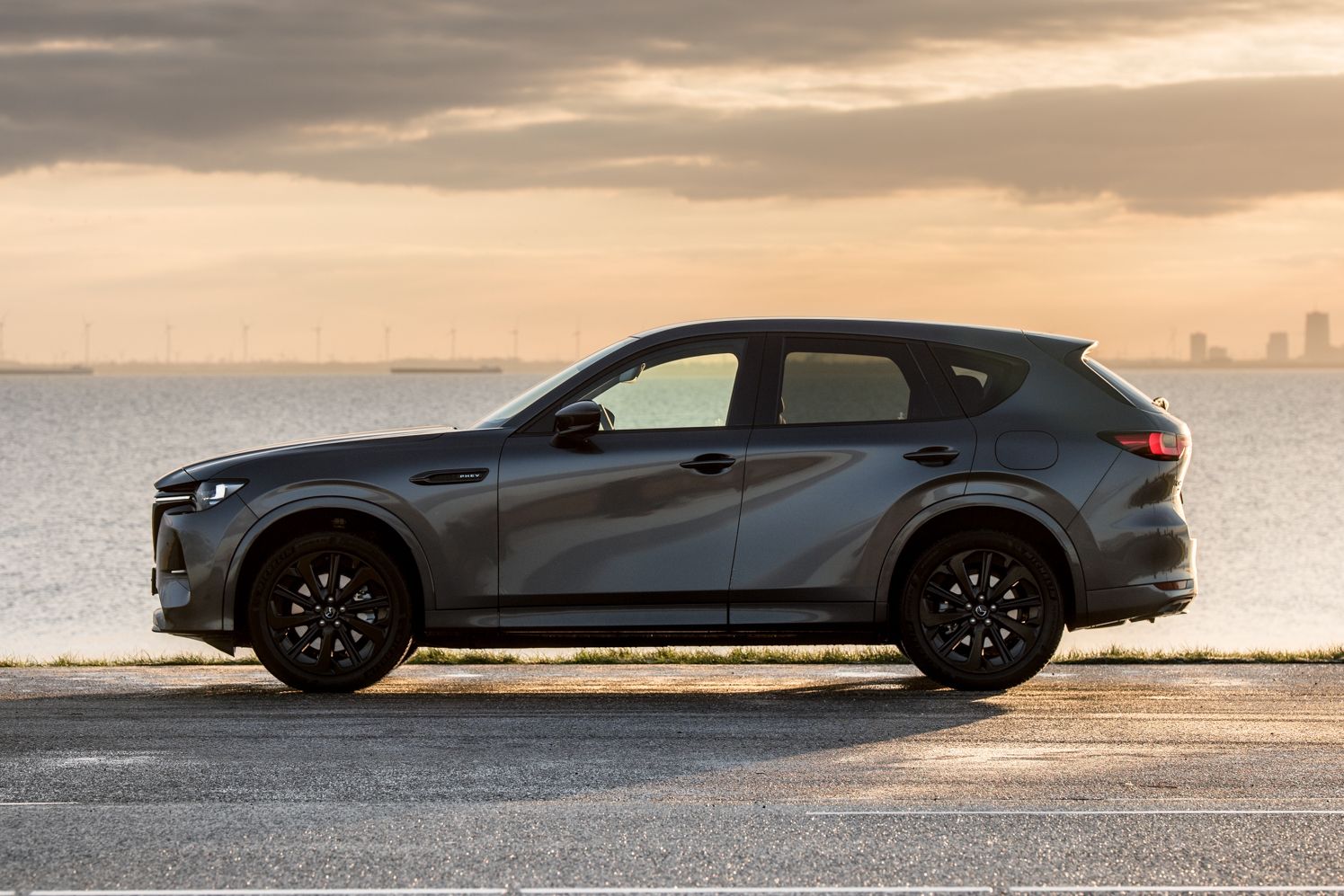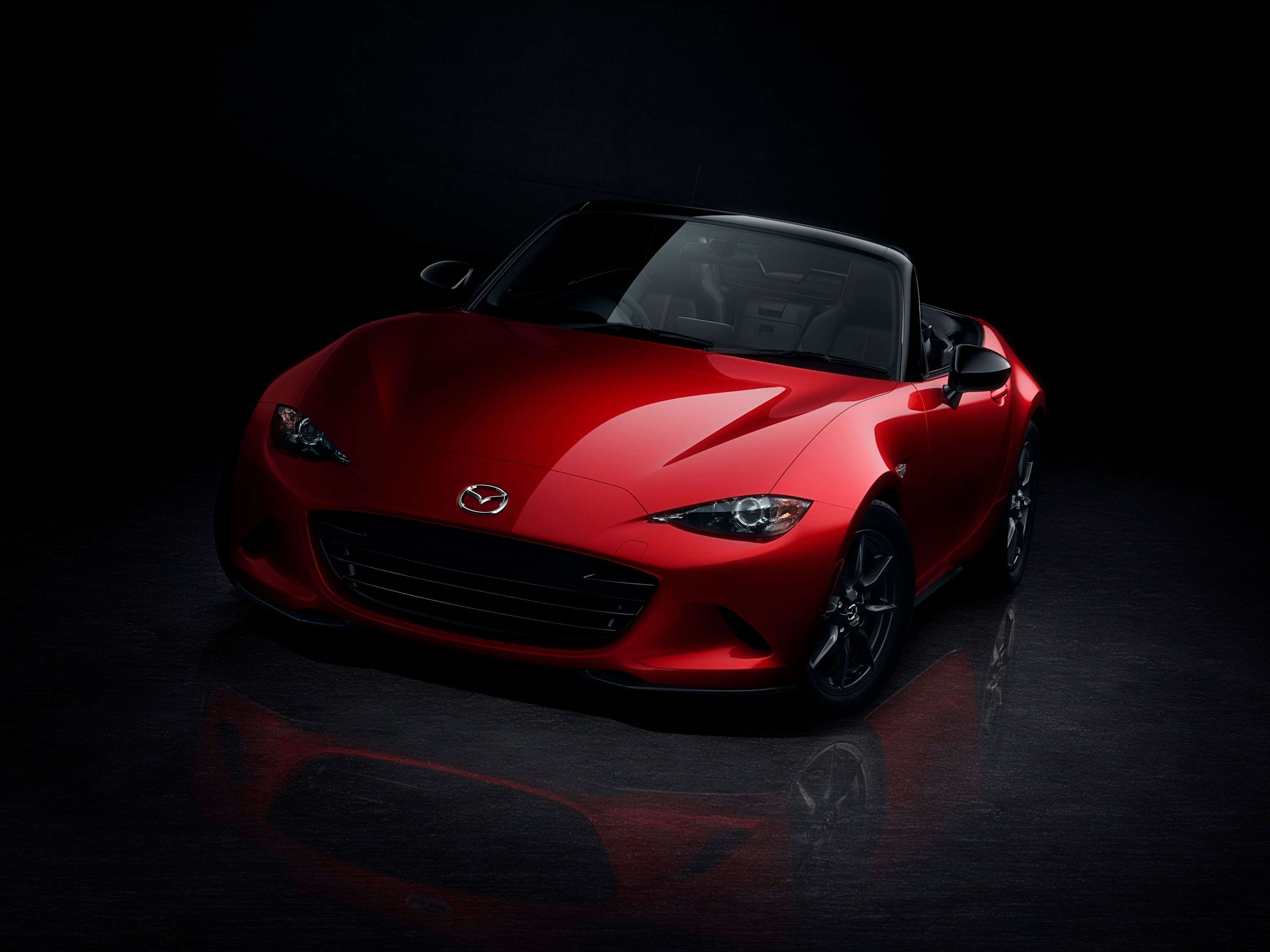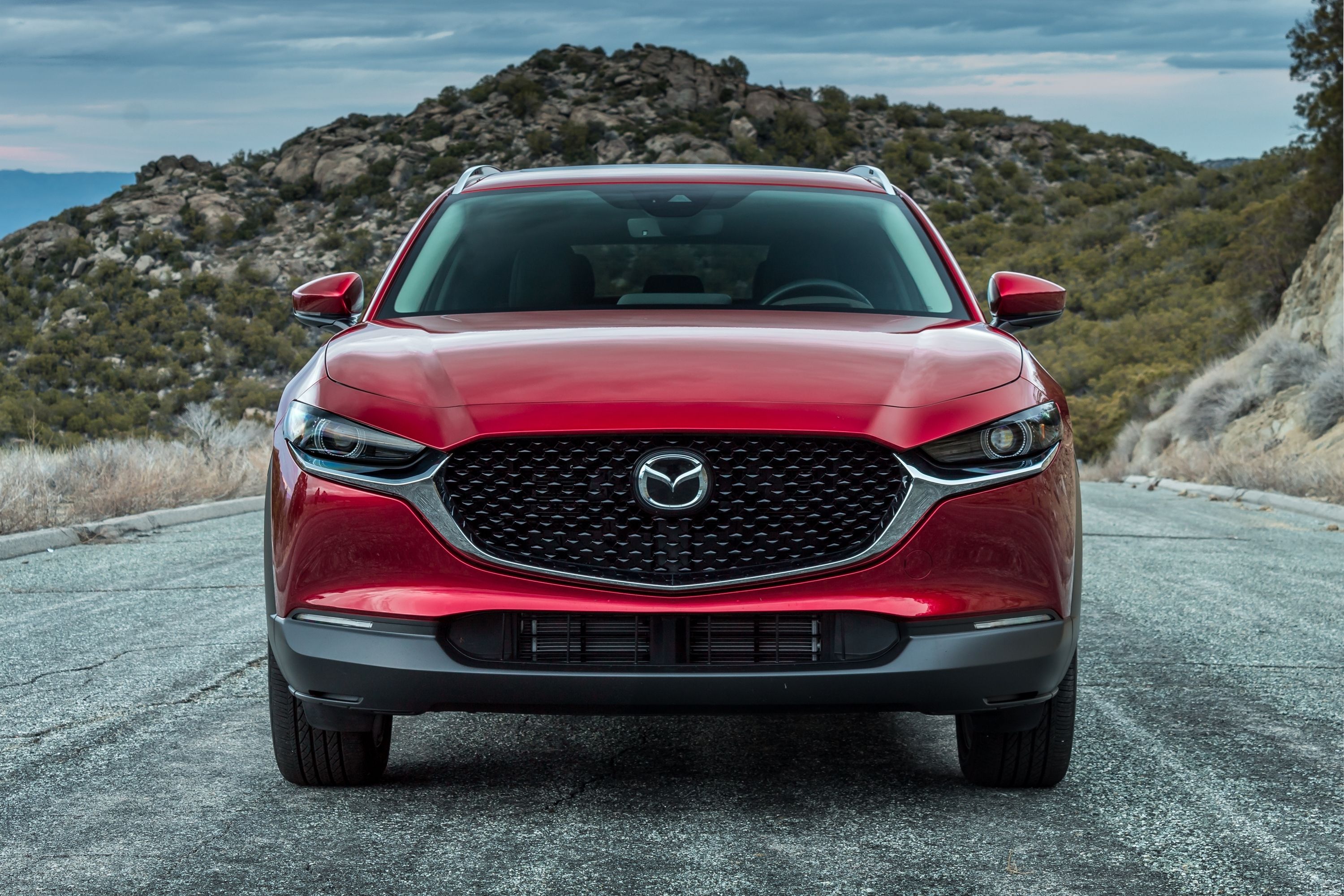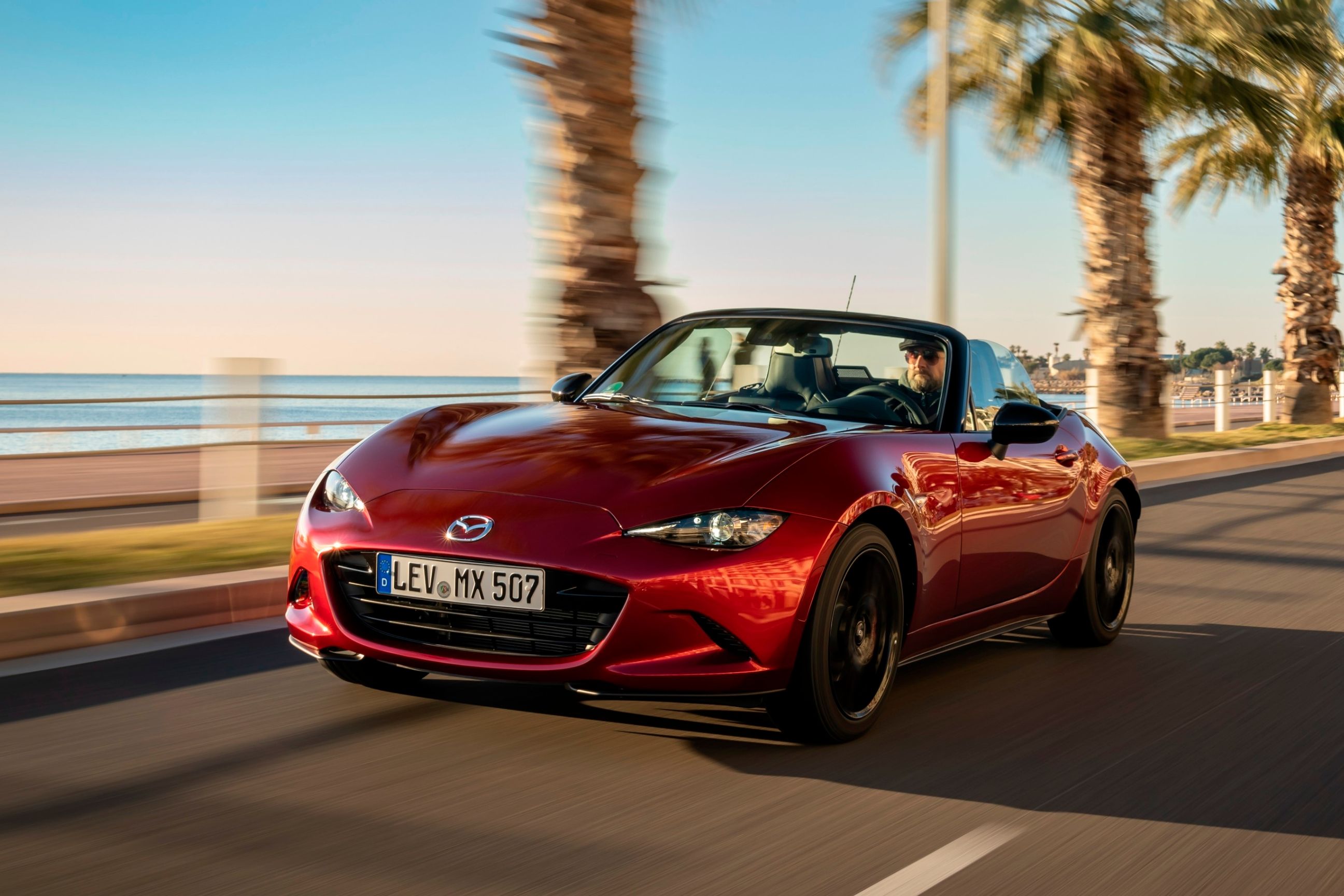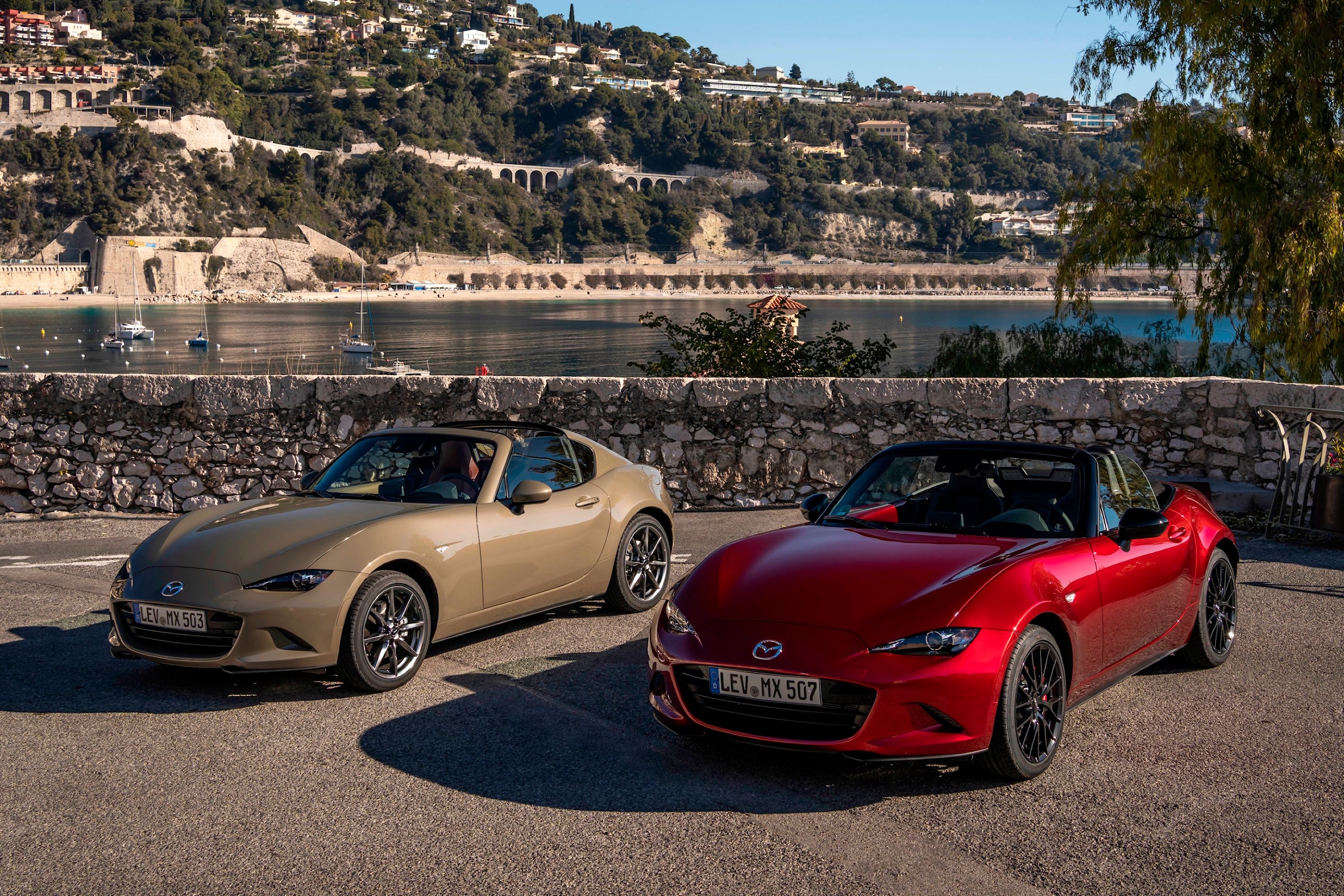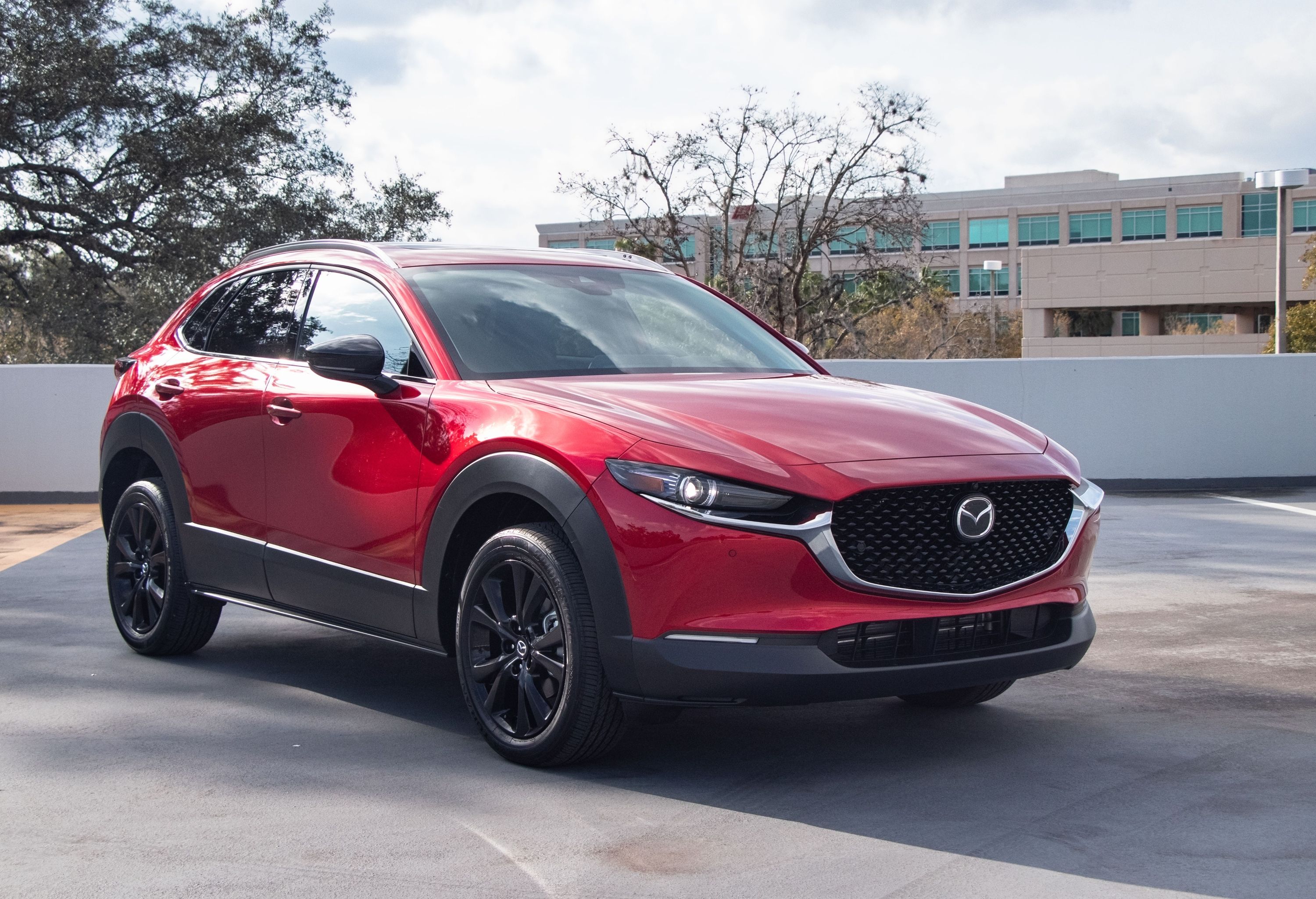
I defy you to find me a better-looking mainstream paint color than Mazda's Soul Red Crystal and a better-looking car that wears it than any of the current Mazda models. This $595 optional paint looks like a million bucks and does something with Mazda's Kodo: Soul of Motion design language that makes even a base model CX-5 look like a premium rival to high-end German machinery.
For a color from a mainstream manufacturer, it has a depth and liquidity to it that makes a car's design change as it moves through the air and as the light hits it from different angles. It's the Mona Lisa of automotive paint colors - different every time you look at it.
Even if Soul Red isn't your jam, other Mazda paint colors like Polymetal Gray or Rhodium White, or almost any other color it offers, all seem to look far more premium than the Mazda brand might suggest. But why is this the case? How does Mazda manage to make its vehicles stand out in a sea of mundanity? How did the Japanese brand manage to get out from under Ford's thumb to create some of the best automotive design work in the world? There are a few reasons.
1 - Utsuroi - The Play Of Light And Shadow
The only reason we can comprehend color, or see anything at all for that matter, is light. The way light interacts with paint colors, particularly those with multiple layers, is something Mazda focuses on more than many brands. In Japanese culture, the way light and shadow play off a surface is called Utsuroi, and it's something Mazda designers leverage at all times. The subtle curvature of the bodywork and a multi-layer paint, in turn, create something with more dimension than merely the way it is shaped. Shadows, for example, reveal the darker underlayer of some Mazda paints, like Artisan Red in the new CX-90.
To maximize this effect, Mazda had to play with surfaces to create convex and concave shapes over which the light continually evolves, and with it, the color itself.
2 - Empty Space And Curvature
Two other important Japanese concepts are Ma and Sori. Ma translates as the beauty and harmony of empty space, while Sori speaks of poised and balanced curves. The former is something Mazda uses particularly for the sides of its vehicles, where the doors seem to have carve-outs in the sheet metal.
Instead of having sharp creases and shoulder lines, Mazda removes them all and lets the light itself create these lines. Mazda says this creates a blank canvas on which the reflections of the world paint an artwork. Sori is about implementing curvature in a balanced way so that the cars don't look overly bulbous or too concept-like.
Mazda Kodo design language combines Ma, Sori, and Utsuroi, resulting in the design language that we know and love today. However, the perfect design goes beyond just these three core principles.
3 - The Art Of Color
But once the groundwork is laid and the sheet metal is stamped, color still plays an important role, bringing to life the subtle curvatures and negative spaces, making the most of the light and shadow. Mazda arguably produces some of the most attractive paint colors around, not simply settling for "red" or "white" or simple Pantone shades.
Instead, it plays with layers, the thickness of its finishes, and even the way these paints are applied. Beyond this, it pays special attention to how these paints interact with light by imbuing them with aluminum flakes that dance in the sunlight.
Artisan Red, for example - the color revealed with the new CX-90 - has a jet-black pigment base with light-absorbing flakes and aluminum flakes. In shadow, this presents as a brilliant black, but when the light hits it, the reflective aluminum flakes combine with a high-chroma red pigment over the top to create a deep, liquid red that comes to life.
Rhodium White uses a similar concept of aluminum flakes in a layer just 0.5 microns thick to create a metallic sheen that makes the paint look like white liquid metal. But to achieve such a feat, Mazda had to relook at the process it used to apply its paints. Too thick, and the paint would lack its fineness and depth; too thin, and the aluminum flakes would be dispersed too sparsely, failing to create the satin sheen.
The result was the 'Takuminuri' method - from the Japanese words Takumi (master craftsman) and Nuri (paintwork) - of applying paint with movements based on those of human artisans. It's this method that has been integral to every one of the brand's most iconic shades since the dawn of the Mazda Kodo design era.
The first hue to benefit from the new method was Soul Red in 2012. Mazda has dedicated thousands of words to the impact of red itself on the human psyche, what it says about car owners, and its history and heritage for the brand. Importantly, though, it highlights red as a color of passion, of emotion, of sensuality, and of danger.
In 2017, Mazda redeveloped Soul Red into Soul Red Crystal, creating a paint with 30% more color saturation and 50% more depth, taking out any orange or blue pigment to create a "red like the translucent red of rubies or of red glass."
With every color Mazda chooses for its vehicles, there's the distinct impression the decision has not been rushed. Instead of offering dozens of hues to choose from, every color has a background and a meaning - a particular emotion or trait it needs to convey.
One of the best ways to see these concepts at work is to look at the first-gen (NA) and second-gen (NB) Mazda Miata. In the Miata community, hundreds of enthusiasts have resprayed their cars in Soul Red Crystal. And yet the two machines look vastly different when finished in this spectacular hue.
That's because the NA Miata had simple bodywork that works best with simple, vibrant colors (we're looking at you, Sunburst Yellow), while the NB has subtle curves culminating in a sleek ducktail-style trunk lid. Its design plays with light, and a Soul Red NB seems to look more alive as you walk around it than an OG Miata wearing the same paint.
Mazda has used a similar philosophy in curating its paint selection to work with the unique curves of its new design language.
4 - The Human Element
Sometimes, automotive design can be technically perfect and yet still feel cold and disconnected. Its precision and beauty are often at odds with the consumer, and while we may be able to appreciate good design, we fail to connect with it.
One element of contemporary car design that is notoriously cold and clinical is LED lighting. Yes, the advent of LED technology in the car world has paved the way for unique expressions of individuality, but at what cost? To circumvent this, Mazda looked to the human heartbeat, emulating the pulse of a heartbeat with its turn signals. Instead of the on-or-off polarity of traditional lighting, this pulse softens our visual interaction with the car. The Mazda CX-30 was the first to pioneer this technology, with the timing of the light adjusted in increments of just one-hundredth of a second to ensure perfection.
"I wanted to infuse a sense of life into the turn signal lamp-a feeling that would manifest the concept of Car as Art," says Atsushi Yoshida has the official title of Designer and Lamp Development Leader at Mazda. "I watched heartbeat waveforms undulate, linger, and diminish, resulting in a turn signal that expresses the warmth lacking in LED lamps."
5 - A Face For The Limelight
Mazda struck gold in 1989 when the Shunji Tanaka-designed Miata was released. With a face modeled on the concept of the Japanese Noh mask, it created an instantly likable human element of the car - its face. It was this that the Kodo design language retained, and it's something Mazda's greatest designs have all had.
That's because these designs leverage what is known as "pareidolia" - seeing faces in inanimate objects. While the psychology behind this goes back to our ability to identify threats in the wilderness, faces give us another human element to latch onto and connect with. Mazda has leveraged this to create designs that resonate with anyone that looks at them.
A Perfect Storm Of Automotive Design
This author is a firm believer that there is an element of luck in Mazda's design masterstrokes. One of the reasons we hold Mazda design in such high regard is that automotive design as a whole has lacked consistency and excellence over the last 20 years. Some cars have been hits and others have been misses. There have been those that shocked with the beauty, while others stunned us with their outrageousness. Some, like Toyota's early 2000's designs, left us feeling absolutely nothing towards them, good or bad, while others, like BMW's recent affinity for faces only a mother could love, have polarized not just car fans, but everyone who comes across them.
Mazda's Kodo design language has been a steady evolutionary design that happened upon something good and continued to evolve through carefully implemented colors and lighting techniques. It was a perfect storm of having the right people with the right ideas in the right place at the right time in automotive design. Peter Schreyer started a similar era at Kia, which lasted until very recently, and we have no doubt other automakers will find their stride in good time.
These things are cyclical, and Mazda's days of beautiful design may well come to an end. But as it stands, right now, Mazda is crushing automotive design like nobody else.

